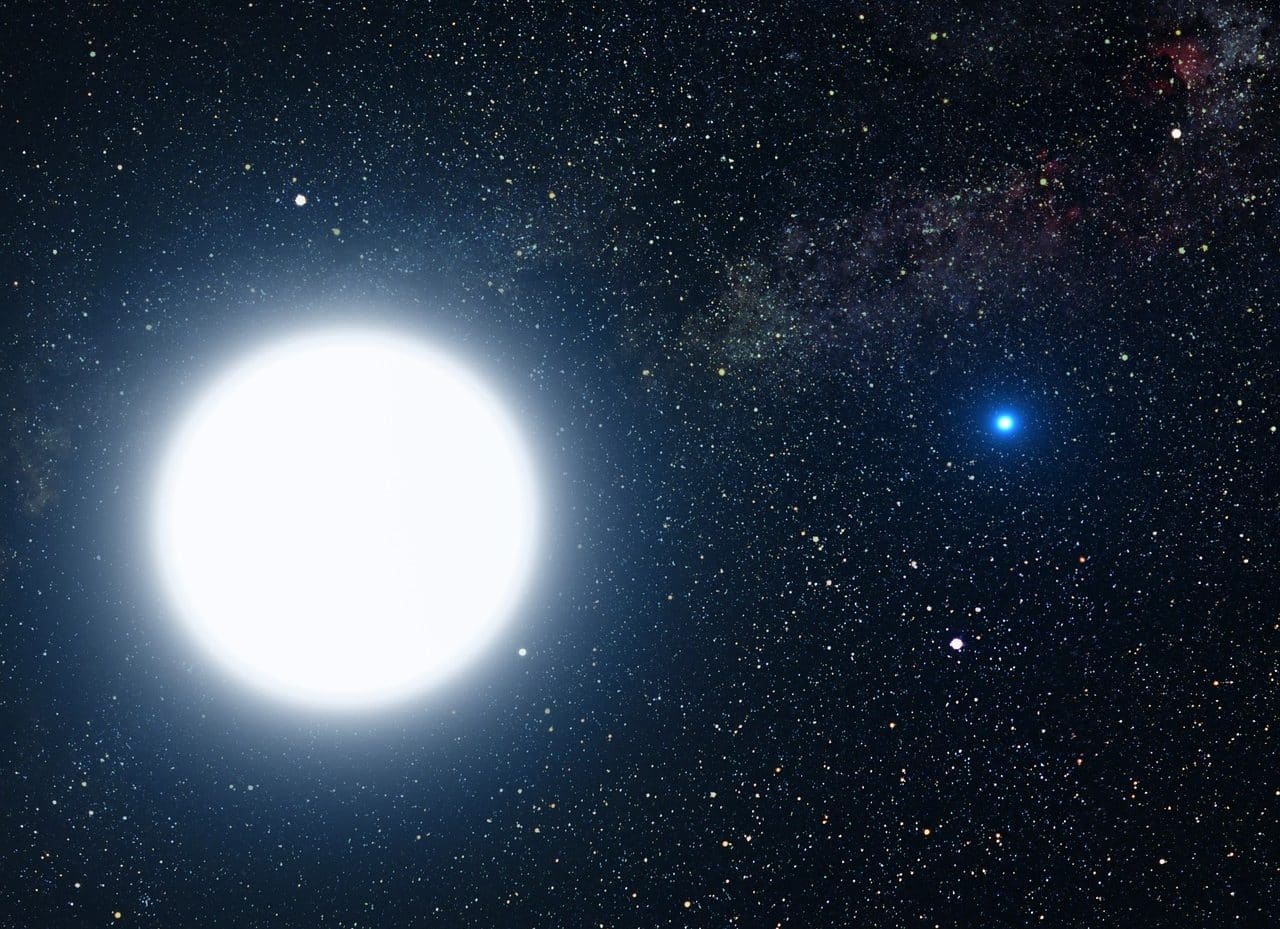
When stars run out of fuel, many of them become white dwarfs. Studying them provides valuable information for Astronomy and Cosmology, for example, since it allows us to make estimates about the age of the universe and predictions regarding stellar matter.
White dwarf is the expression used in Spanish to refer to the stellar remnant that emerged from a star of mass comparable to that of the Sun that, after exhausting its nuclear fuel , does not undergo thermonuclear reactions in its core and presents a weak luminosity. .
Running out of energy sources capable of balancing the collapse in gravitational matter , each white dwarf ejects materials present in its outermost layers, creating an envelope called a planetary nebula and, as a result of its own weight, it compresses on itself at very high temperatures. elevated.
As experts dedicated to examining phenomena and elements of the universe have determined, in this class of stars (which are as numerous as the stars that fall into the red dwarf category) there is generally oxygen and carbon , as well as Its atmosphere is made up of a mixture of helium and hydrogen .
There is still much to discover, explain and learn in relation to white dwarfs , which is why it is valuable and constructive to deepen the interest of specialists in the particularities, transformations and effects of white dwarfs . In 2023 , for example, it came to light that, on German soil, a group of astronomers managed, thanks to the glow of resplendent X-rays caused by nuclear fusion , to spot a binary star system where, instead of hydrogen , flows helium towards the surface of a white dwarf . Based on the measurement of its luminosity, it was estimated that the mass of said white dwarf grows at a slower rate than imagined. In this regard, it cannot be overstated that it is complex to establish the circumstances conducive to the mass of one of them growing until it reaches what is described as the Chandrasekhar limit .
In addition to revealing information about, for example, how carbon could have appeared in the Milky Way , constant research has made it possible to collect clues associated with the eventual final instance of the Sun (which, as predicted, in around five billion years it will end up becoming a fiery and dense white dwarf ), but it is essential to continue working to obtain greater precision regarding stellar evolution , increase predictions and test multiple theories or hypotheses.

Through the Chandra X-ray Observatory , generally intended for the detection of white dwarf they orbited.
Types of white dwarf
Since they have been identified and taken as an object of study, various types of white dwarfs have been distinguished.
Not too far away in time, for example, a white dwarf has been found with two types of surfaces: on one of its faces it has helium and, on the other, hydrogen .
There is also evidence of a rare pure helium white dwarf and both the variety called the carbon-oxygen white dwarf is known (if two of them are within a binary system and end up colliding and merging, they give way to a supernova type Ia) as well as the magnetic white dwarf .
There is even a history of white dwarf pulsars , a variant that surprises because it is strange, challenges beliefs and forces new predictions.
Relevant findings
Among the relevant findings that have contributed to learning about white dwarfs is 40 Eridani B , noted as the first in history to be detected. It was later noted that the second white dwarf discovered was Sirius B.
Thanks to the range and precision of telescopes , Van Maanen's star has been located within the constellation of Pisces . It is a solitary and ancient white dwarf , a stellar remnant of a red giant that ended up expelling its outer layers when its nuclear fuel ran out.
Through the scientific publication Monthly Notices of the Royal Astronomical Society , it has also been documented that researchers from the United States and the Argentine National Council for Scientific and Technical Research (CONICET) achieved, at the Institute of Astrophysics located in the Buenos Aires town of La Plata , identify the most massive of the pulsating white dwarfs that have been recognized to date. This detection constitutes an excellent chance to know precisely how their nuclei are chemically composed and whether or not they are in a crystallized state. Through them as an object of study, experts consider, the Theory of General Relativity launched many years ago by Albert Einstein could be tested.

Multiple investigations have allowed us to distinguish various types of white dwarfs and add interesting data about the Milky Way that make observing the sky more exciting.
Experts from the Astronomical Observatory of Córdoba (Argentina) , for their part, have found, using telescopes and spectroscopy , several (seven, specifically) white dwarfs within a handful of planetary nebulae that force us to rethink the classic models of stellar evolution .
Equally curious and attractive has been the information disclosed in recent seasons explaining how a red giant , in the galaxy called GSN 069 , was captured by the gravity of a black hole . In that framework it burned, swelled and released external mantles, forming a white dwarf capable of traveling through said space with a certain frequency and generating, in that context, an explosion of X-rays .
